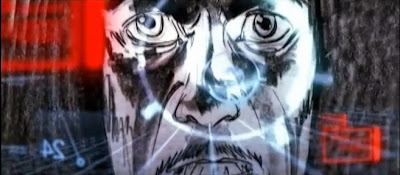Industry Insights: What is an Animatic? Interview with Peter Rubin, Martin L. Mercer and Jim Rothwell
 |
| Iron Man 2 "House Fight" by Eric Ramsey (Animatic by Jim Rothwell) |
This week I've talked a lot about storyboard animatics, but have you ever wondered what they are? I asked some of the leading industry concept and storyboard artists what an animatic is and you can read their expert opinion. You'll also read an exclusive interview with the animatics artist Peter Rubin calls "the best in the business": Jim Rothwell!
Find out what an animatic, and read my interview with Jim Rothwell is after the jump.
"Iron Man 2: House Fight" by Eric Ramsey (Animatic by Jim Rothwell)
What is an Animatic?
"'Animatic' is one of three synonyms for 'moving storyboard,' the others being 'pre-vis' (short for pre-visualization) and 'board-o-matic,' reserved for animated 2D storyboards and meant to distinguish them from the popular 3D animatic, which is created with 3D animation software on a computer and usually what is meant these days by 'pre-vis.' Originally, if they were used at all, they were created either by filming drawings sequentially, (similar to a 'pencil test' in animation) or by moving miniature pieces across a tabletop and shooting them with a very small video camera on the end of a stick." Peter Rubin (www.ironroosterstudios.com)
"An animatic is layered animation of drawn art usually created on a tablet and animated in a program such as After Effects. It's a way of bringing boards to life, sometimes 3D elements can be included, but an Animatic as very different from a Pre-Viz animation.Which is more like a game in its look." - Martin Mercer (martinmercer.com)
"An animatic in simplest form is storyboards with the element of time added. If this was construction, the storyboards are the blueprint, and the animatic is the scale model. Lyca Reels, Story Reels are deeply embedded in the animation world, where finished shots are plugged in over rough drawings." - Jim Rothwell (jimrothwell.blogspot.com)
What's the Purpose of an Animatic?
"An animatic provides story timing and action." - Martin Mercer
"This allows more information to be added to the storyboard 'blueprint'; things like pacing, performance, mood, SFX, sound/music cues and screen direction can now be seen/adressed in a 'real time' environment, months, sometimes years before a final shot is complete." - Jim Rothwell
How Does an Animatic Get Made? Interview with Jim Rothwell
Maurice Mitchell: How do you explain an animatic to someone? What is it?Jim Rothwell: It really depends on the project, sometimes I'm given a lot of freedom and handed a stack of boards, other times it's very specific, but the end goal is to try and get the animatic as close to the director's vision as possible.
It's kind of like a big puzzle, you add all the notes from the board artist, screenplay and director, then fill in the gaps. I also think that sound is about 40% of a movie, I try to spend as much time on sound as the deadline allows. In the end, we are all a bunch of tools in the box; it's what toolset the director feels comfortable with to complete the job.
MM: How much do you add to your animatics besides the original illustrations?
JW: Again it really depends on the project, but basically animation, sound and editing. I like to think of the storyboad artist as the production crew shooting dailies (as boards) and the animatic artist as editorial.
Many times, layout is a big part of the animatics. Sometimes the board artist provides backgrounds, sometimes backgrounds are "Frankensteined" out of A/B/C/D boards in Photoshop, and sometimes 3D sets are dropped in; the same applies to characters and props. But, ultimately what I provide (I hope) is a real time glimpse of what the scene would feel like on the big screen.
What do you think of animatics? Did you learn anything new?
Follow @filmsketchr
Although I'm not a visual artist, the work that goes into each sequence for a film impresses me, and inspires me to do the same in my writing. I definitely learned more about animatics here. Thanks for sharing!
ReplyDelete